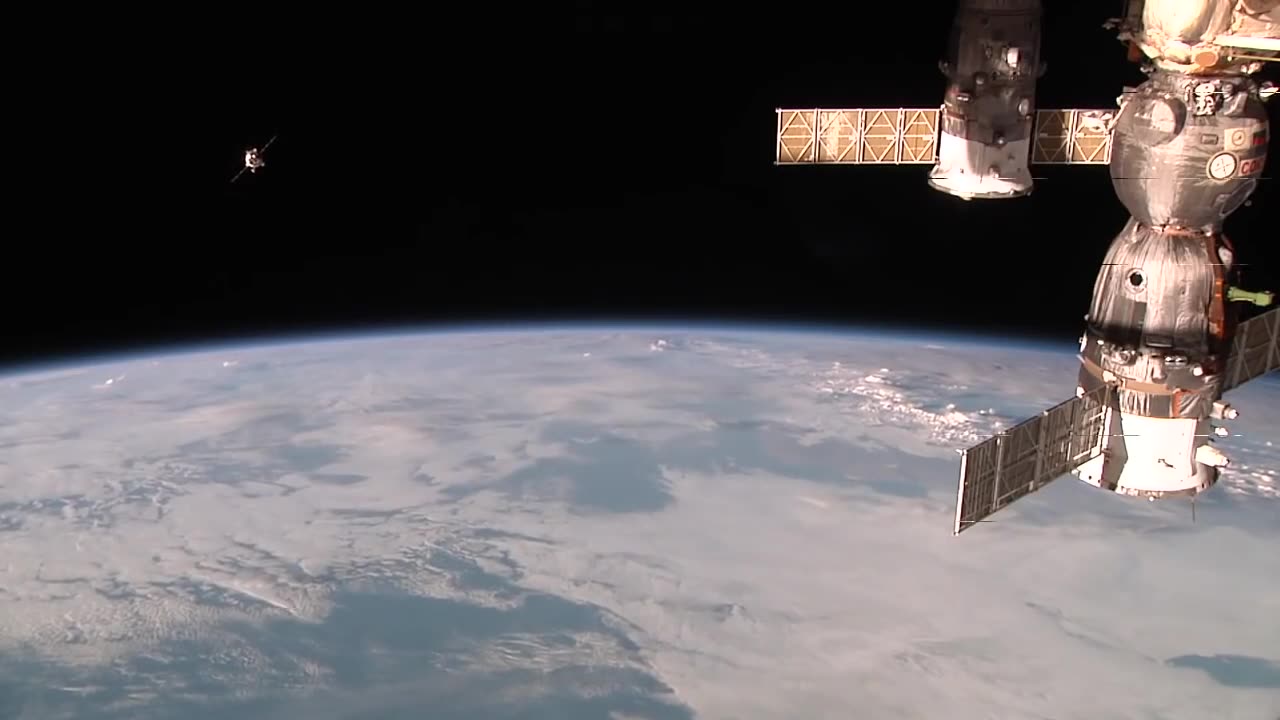Premium Only Content

Earth Views from the International Space Station
As the International Space Station orbits our planet at a speed of approximately 28,000 kilometers (17,500 miles) per hour, it provides its crew with an unparalleled view of Earth. Looking out of the station's windows, astronauts are met with a mesmerizing panorama of our blue planet set against the inky black backdrop of space.
The most striking feature is, of course, the deep azure hue of the Earth's oceans. The oceans cover over 70% of our planet's surface, and from space, they appear as vast, shimmering expanses of varying shades of blue. The contrast between the deep oceanic blues and the lighter turquoise hues near coastlines is a sight to behold. You can even see the occasional swirl of white, which represents ocean currents and wave action.
Continents are easily recognizable from the ISS, with their diverse terrains and geological features. Mountain ranges are often visible as rugged, brownish or greenish formations, and deserts appear as vast, arid expanses. Lush green forests and fertile plains provide a stark contrast to the arid regions. The sharp contrast between land and water is a reminder of the delicate balance of ecosystems on Earth.
The atmosphere, appearing as a thin, fragile layer, surrounds our planet in a translucent envelope. When sunlight passes through this thin veil, it creates a breathtaking halo-like effect known as the "atmospheric limb." This phenomenon showcases the Earth's atmosphere as a delicate gradient of colors, ranging from bright blue near the surface to progressively darker shades as it extends into space.
Weather patterns and cloud formations are equally mesmerizing. You can witness the ever-changing dance of clouds, from fluffy white cumulus clouds to the wispy tendrils of cirrus clouds. Thunderstorms, with their anvil-shaped tops and lightning flashes, are particularly captivating.
Sunrises and sunsets from the ISS are a surreal experience. As the station orbits the Earth approximately every 90 minutes, astronauts witness about 16 sunrises and sunsets in a 24-hour period. During these transitions, the sky is painted with a brilliant spectrum of colors, from fiery reds and oranges to soft pinks and purples, casting a warm glow on the surface below.
At night, the view is equally stunning, with thousands of city lights twinkling like stars. Major urban centers are easily identifiable by their bright, concentrated clusters of lights. The natural beauty of auroras, the ethereal, dancing curtains of light that grace the polar regions, is also a sight to behold.
Overall, the Earth views from the International Space Station offer an unparalleled perspective of our planet's beauty, fragility, and interconnectedness. They serve as a powerful reminder of the need to protect and preserve the delicate environment that sustains all life on Earth.
-
 LIVE
LIVE
PudgeTV
1 day ago🟠 Gaming on Rumble | Soulframe Early Access Gaming Showcase
187 watching -
 LIVE
LIVE
ttvglamourx
5 hours ago $1.41 earnedSearching To Destroy !DISCORD
177 watching -
 LIVE
LIVE
itsReel
3 hours agoGaming SUNDAY
134 watching -
 28:43
28:43
Liberty Hangout
3 days agoAnti-Trumpers Don't Know What They're Protesting
55.3K237 -
 20:33
20:33
Sideserf Cake Studio
1 day ago $4.05 earnedI Built A Bikini Bottom Fish Tank CAKE!
39.8K13 -
 LIVE
LIVE
Gore TV
3 hours agoNO LOOT?! Fine 😤 I’ll Build My Own Gun! 🔫🪵✨
99 watching -
 LIVE
LIVE
XxXAztecwarrior
3 hours agoPlaying Normals Big Red Hunting Delta Force
86 watching -
 2:22:46
2:22:46
The Connect: With Johnny Mitchell
1 day ago $14.47 earnedOne Man's Mission To Stop Human Trafficking: How A Billionaire Mercenary Saved Hundreds Of Children
52.8K36 -
 16:24
16:24
Forrest Galante
18 hours ago6 Deadliest Man Eaters to Ever Exist
88.8K23 -
 10:35
10:35
Warren Smith - Secret Scholar Society
2 days agoExposing the Illusion of Gary's Economics
71.8K12